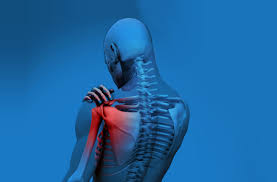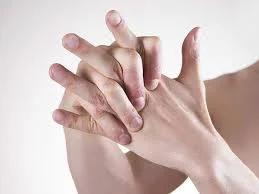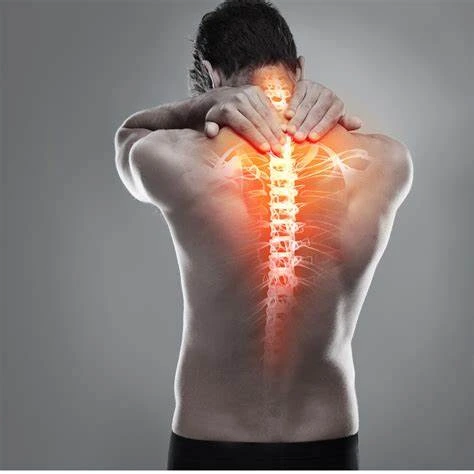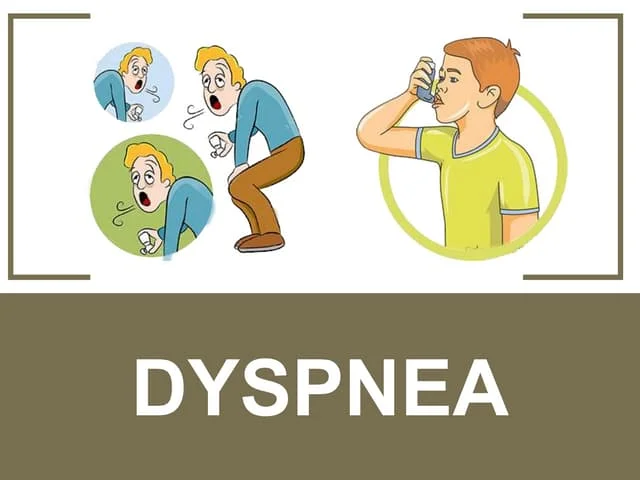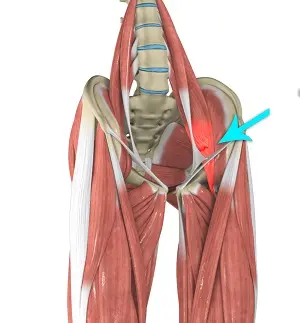Neck and Shoulder Pain
Introduction:
Neck and Shoulder Pain common causes are Injuries, overuse, stress, bad posture, and underlying medical disorders like herniated discs, frozen shoulder, and cervical spondylosis can all cause these difficulties. Pain in one place can quickly travel to another because of the shared network of muscles, nerves, and joints.
Shoulder and neck pain can cause stiffness, decreased movement, and ongoing pain, making it extremely difficult to carry out regular tasks. Symptom management and the avoidance of long-term consequences can be greatly aided by early evaluation and appropriate physical therapy.
From modest to extremely severe, pain might include:
- tingling
- shooting pain
- stiffness
- numbness
- spasms
- soreness.
Causes of Neck and Shoulder Pain:
Sports-related sprains and strains, excessive activity, or poor posture account for the majority of cases of neck and shoulder pain.
Soft tissue injuries:
- stiffness
- headache
- muscle spasms
Rotator cuff tear:
- A single accident, such as a fall, or prolonged stress, like from sports or repetitive overhead labor, can result in a rotator cuff tear.
Whiplash:
Other typical reasons are as follows:
- contact sports
- falling
- a blow to the head
The following symptoms may not show up for many hours or longer:
- neck pain and stiffness
- headaches
- dizziness
- blurred vision
- constant tiredness
While most people recover completely in a few weeks or months, other people may experience headaches and chronic pain for years after the event.
Cervical spondylosis (cervical osteoarthritis):’
- Over 85% of adults over 60 suffer from this extremely prevalent condition.
- There are disks, which are soft materials, between each vertebra.
- Your vertebrae become more closely spaced. Cervical osteoarthritis is a disorder that can result from this irritation of the joint membrane.
A disk is said to be slid, prolapsed, or herniated if its soft inner part pokes through its tougher outer layer.
- pain
- numbness
- tingling
- aching
- a burning sensation in your neck.
Stable angina:
- Pain typically originates in the middle of the chest and might radiate to the chin, neck, shoulders, left arm, and back.
Stroke or cervical artery dissection:
Among the signs of a stroke are:
- Face drooping,
- Arm numbness or weakness,
- Trouble speaking, or slurred speech
- Eyesight issues and walking difficulties.
Broken collarbone (clavicle).
A broken clavicle can be identified by:
- Severe pain,
- Shoulder slumping and an inability to raise your arm
- Soreness,
- Edema,
- Bruises.
Broken shoulder blade (scapula):
- High-impact injuries like motorcycle or car crashes can result in scapula fractures.
- Swelling at the back of your shoulder and excruciating pain when you move your arm are symptoms.
Frozen shoulder (adhesive capsulitis):
- When you have frozen shoulder, moving your shoulder becomes more painful and challenging.
- Although the exact reason is unknown, those with diabetes and those aged 40 to 60 are more at risk.
Shoulder tendinitis or bursitis:
- Strong fibers called tendons connect your muscles to your bones. Fluid-filled sacs called bursae help to reduce joint friction. Shoulder pain may be caused by inflammation of the tendons (tendinitis) or the bursa (bursitis), however, pain can arise anywhere inflammation takes place.
Shoulder separation:
- When you fall straight on your shoulder, you frequently injure the AC joint. From a little sprain to a total separation exhibiting a noticeable lump or bulge over the shoulder, severity might vary. There may be pain in the surrounding regions. Study up on surgery for the AC joint.
Shoulder and neck referred pain:
The following are a few signs of neck pain that have been referred:
- When you twist your neck, you may experience pain that travels to your elbow, hand, and shoulder blade.
- pain that is alleviated by supporting your neck.
Gallstones or an enlarged gallbladder:
Additionally, you can experience soreness between your shoulder blades in your back. The pain could be abrupt and intense.
You might or might not experience the more typical signs of gallbladder inflammation or gallstones. They are:
- Abdominal pain in the middle,
- beneath the breast bone, and an abrupt ache in the upper right abdomen,
- together with nausea or vomiting.
Neck and shoulder pain with headache:
- Tension headaches are frequently caused by tense neck muscles. Cervicogenic headache is the term used to describe this kind of referred pain. Migraines and cervicogenic headaches often have similar symptoms. Among the symptoms are:
- Headache following specific neck motions, stiff neck, and pain on one side of your head or face
pain surrounding your eyes.
- Cancer.
- Posture and sleeping position.
- Heart attack.
- Pinched nerve (cervical radiculopathy).
Risk Factors for Neck and Shoulder Pain:
Your vulnerability to shoulder and neck pain might be increased by a number of reasons. You can take preventative action if you are aware of these risk factors.
- Bad Posture: Poor posture is the biggest risk factor for shoulder and neck pain. Incorrect posture can cause pain and stiffness in your muscles and joints, whether you’re standing for extended periods, sitting at a desk, or even sleeping in an uncomfortable position. Preventing these problems requires maintaining proper posture throughout daily activities.
- Age: Degenerative changes in joints and muscles caused by aging increase the risk of neck and shoulder pain in older people. Stiffness and pain may result from the degeneration of the padding between vertebrae and the loss of muscle flexibility.
- Occupation: Neck and shoulder strain can result from jobs that require repeated motions, like assembly line labor, or extended periods of sitting, such as office work. Musculoskeletal injuries are also more likely to occur in jobs involving heavy lifting.
- Physical Inactivity: Muscles become weaker and less flexible due to a sedentary lifestyle, which increases their susceptibility to strain. Frequent exercise enhances posture overall and strengthens the supporting muscles.
- Obesity: Carrying too much weight puts extra strain on the shoulders and neck. Being overweight can cause pain and discomfort by changing your posture and putting more strain on your joints.
- Smoking: Smoking reduces blood flow and oxygen delivery to tissues by narrowing blood arteries. Muscle soreness, stiffness, and delayed recovery may result from this.
Diagnosis:
In order to diagnose the problem, the doctor might subsequently prescribe more testing. For neck and shoulder pain to be effectively treated, the underlying reason must be accurately diagnosed. A comprehensive physical examination is usually the first step taken by your healthcare professional to evaluate your range of motion, muscle strength, and soreness.
To view the bones, muscles, and soft tissues in the neck and shoulder region, imaging procedures like X-rays, MRIs, or CT scans may be prescribed. These examinations can assist in detecting anatomical anomalies like bone spurs or herniated discs.
To rule out inflammatory disorders or other systemic illnesses that might be causing the pain, blood testing can be required.
Other test examples include:
- Blood tests
- X-rays
- CT scan
- MRI
- electromyography (EMG).
Treatment of Neck and Shoulder Pain:
Medical treatment:
Emergency care is frequently required for heart attacks, strokes, and other severe illnesses. In these situations, get medical assistance right away.
- Painkillers, whether prescribed or over-the-counter, can help control inflammation and pain.
- A customized workout regimen can be created by a physical therapist to address postural imbalances, increase flexibility, and strengthen muscles.
- Pain can be lessened, and stiff muscles relaxed by massage.
- Inflammation and pain can be reduced by using cold or hot packs.
- It may be helpful to adjust your daily routine or workspace to lessen shoulder and neck pain.
- Corticosteroid injections may offer short-term joint inflammation.
- Surgery may be considered to correct underlying problems, such as pinched nerves or herniated discs, in extreme cases where conservative therapy is ineffective.
Physical Treatment:
Neck and shoulder pain exercises:
Before beginning any neck and shoulder exercises, it’s crucial to speak with a doctor to ensure that the movements won’t worsen your issues. The stretches and exercises listed below might help ease shoulder and neck pain. These are mild stretches and motions to relieve stiffness. Stop the exercises and get in touch with a doctor if your pain gets worse or worsens while you perform them.
To alleviate the pain, a doctor might also recommend that you see a physical therapist. You can receive a customized at-home workout regimen from the therapist. Your shoulders and neck will become stronger as a result, reducing the chance of further injuries.
Levator scapula stretch:
- On either side of your neck, you will find the levator scapulae muscle.
- Bend your head until your neck and back start to gently stretch, then turn it to the other side.
- Continue with the opposite side.
Shoulder stretch:
- Hold for five seconds.
- Draw down your shoulder blades.
- Hold for five seconds.
Preventing neck and shoulder pain:
By sitting and walking with proper posture and altering your daily activities to reduce strain on your neck and shoulders, you may be able to prevent neck and shoulder pain.
Some helpful tips are as follows:
- Maintaining proper posture eases shoulder and neck pain and aids in the even distribution of weight.
- Take Breaks: Take brief breaks to stretch and move around if your job requires you to sit still for extended periods or perform repetitive tasks.
- Exercise frequently: To increase muscle strength and flexibility, including stretching and strength training activities in your regimen.
- Handle Stress: Prolonged stress can worsen pain and tenseness in the muscles. Look for stress-reduction techniques that are beneficial, including yoga, meditation, or deep breathing.
- Keep Your Weight in Check: Reducing extra weight helps ease the strain on your muscles and joints.
- Ergonomic Workspace: Make sure your desk is arranged to prevent shoulder and neck pain and encourage proper posture.
- Performing posture-correcting exercises
- Avoid repeated activities, especially those that strain your neck and shoulders, and get up and move about frequently if you spend a lot of time sitting down, ideally every 30 minutes.
- Observing ergonomics at work to prevent shoulder pain, which may involve:
- Utilize a chair with adequate back support and maintain the top of the computer screen at eye level.
Conclusion:
Frequently caused by bad posture, strained muscles, or underlying medical concerns, neck and shoulder pain are frequent problems that can greatly affect day-to-day functioning. Effective management and reduction of pain can be achieved through early diagnosis, appropriate treatment, and preventive measures such as regular exercise, ergonomic changes, and physical therapy. When symptoms continue, getting professional assistance helps avoid more problems and guarantees long-term relief.
FAQs:
Which posture is most effective for reducing shoulder and neck pain?
Even though it might seem awkward at first, maintaining a naturally curved spine and relaxed arms in front of you can have a lot of benefits. Shoulder ache: Your best companion when dealing with a shoulder ache is a hug pose. Shoulder strains can be caused or prevented by sleeping on your side.
For shoulder and neck pain, which muscle relaxant is most effective?
Cyclobenzaprine
Since cyclobenzaprine is an inexpensive generic drug, it makes sense to start with it. However, there is a greater chance of adverse effects, such as fatigue. This restricts your daytime use of it.
How can shoulder pain be managed at home?
Applying ice packs for 15 to 20 minutes, multiple times a day, can help treat mild to severe shoulder pain at home by reducing pain and inflammation. Avoid activities that make the shoulder hurt, and think about taking over-the-counter painkillers like naproxen or ibuprofen.
How can neck pain be massaged?
The first step in massaging neck pain is to gently push and release tension in your neck muscles using your thumbs. Additionally, you can knead and squeeze the shoulders with your fingers and hands. Focus on any regions that are especially tight or uncomfortable, and take your time exploring what feels good.
How can I relax my neck and shoulders?
As you exhale, roll your shoulders forward as though you were using your elbows to make invisible circles. Repeat in the opposite direction after reversing the circles. You should experience your muscles becoming less tense. Breathe deeply for another 30 to 45 seconds.
What causes pain in the neck and shoulders?
Muscle strains, bad posture, whiplash injuries, and even underlying diseases like arthritis or pinched nerves can all cause neck and shoulder pain. Overuse, tension, and even specific behaviors like sleeping in uncomfortable positions are other possible reasons.
References
- Hecht, M. (2025, February 18). What causes concurrent neck and shoulder pain, and how do I treat it? Healthline. https://www.healthline.com/health/what-causes-concurrent-neck-and-shoulder-pain-and-how-do-i-treat-it
- Neck and shoulder pain management. (2024, July 17). WebMD. https://www.webmd.com/pain-management/neck-shoulder
- Patil, S. (2025, January 18). Neck and Shoulder Pain: Causes, Risk Factors, Diagnosis & Treatment. Polarishealthcare. https://www.polarishealthcare.in/post/neck-and-shoulder-pain
- Kirkbride, J., MD. (2019, September 3). What causes neck and shoulder pain? Spine-health. https://www.spine-health.com/conditions/neck-pain/what-causes-neck-and-shoulder-pain

